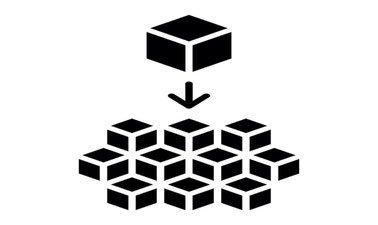MOOC List is learner-supported. When you buy through links on our site, we may earn an affiliate commission.

MOOC List is learner-supported. When you buy through links on our site, we may earn an affiliate commission.
This intermediate-level course begins with a refresher on Microservices and the advantages of using a Microservices architecture. You will then gain an understanding of how serverless benefits developers, when to use serverless programming and serverless deployment models, and be introduced to serverless technologies. You will discover how serverless supports continuous integration and continuous delivery (CI/CD), and microservices integration.
Hands-on labs throughout this course give you the experience to create and deploy Microservices using OpenShift and Istio. For your final project you will put into practice your serverless and microservices skills and create a real-world serverless web application using OpenShift and Cloud Object Storage.
This course is part of the Full Stack Cloud Developer Professional Certificate and Full Stack Cloud Application Development MicroBachelors
What you'll learn
- Summarize the fundamentals of Microservices, its advantages and contrast with monolithic architectures.
- Explain the capabilities of service mesh including Istio, why it is useful and how it alleviates challenges with Microservices.
- Explain the process for deploying Microservices on OpenShift.
- Describe Function as a Service capabilities and benefits.
- Describe Serverless Computing and its increasing importance for developers in Cloud Native development.
- Identify the attributes of serverless.
-Build a serverless web application and deploy as a microservice on Red Hat OpenShift and as static files on Cloud Object Storage.
Syllabus
Module 1: Introduction to Microservices
- Twelve-Factor App
- What are Microservices
- Advantages of Microservices
- Microservices and IBM Cloud
- Lab: Modernize App Using Microservices
Module 2: Introduction to Serverless
- What is Serverless?
- Serverless Pros and Cons
- What is Function as a Service?
- The Serverless Stack
- Comparing the FaaS Model
- Use Cases and Reference Architecture
- Serverless and IBM Cloud
- Lab: Hello World with Serverless
Module 3: ORM: Microservices w/ Serverless
- Create and Invoke Actions – Part 1
- Create and Invoke Actions – Part 2
- Manage Action with Packages
- Connect Actions to Event Sources
- Expose Actions as APIs
- IBM Cloud Code Engine
- Lab: Serverless Web Application and API
Module 4: OpenShift Essentials/Working with OpenShift and Istio
- OpenShift Recap
- Service Mesh and Istio
- Istio and Microservices
- How to Create and Deploy Microservices w/ OpenShift and Istio
- Red Hat Marketplace
- Lab: Deploying Microservices w/ OpenShift and Istio
Module 5: Final Project
MOOC List is learner-supported. When you buy through links on our site, we may earn an affiliate commission.
MOOC List is learner-supported. When you buy through links on our site, we may earn an affiliate commission.
